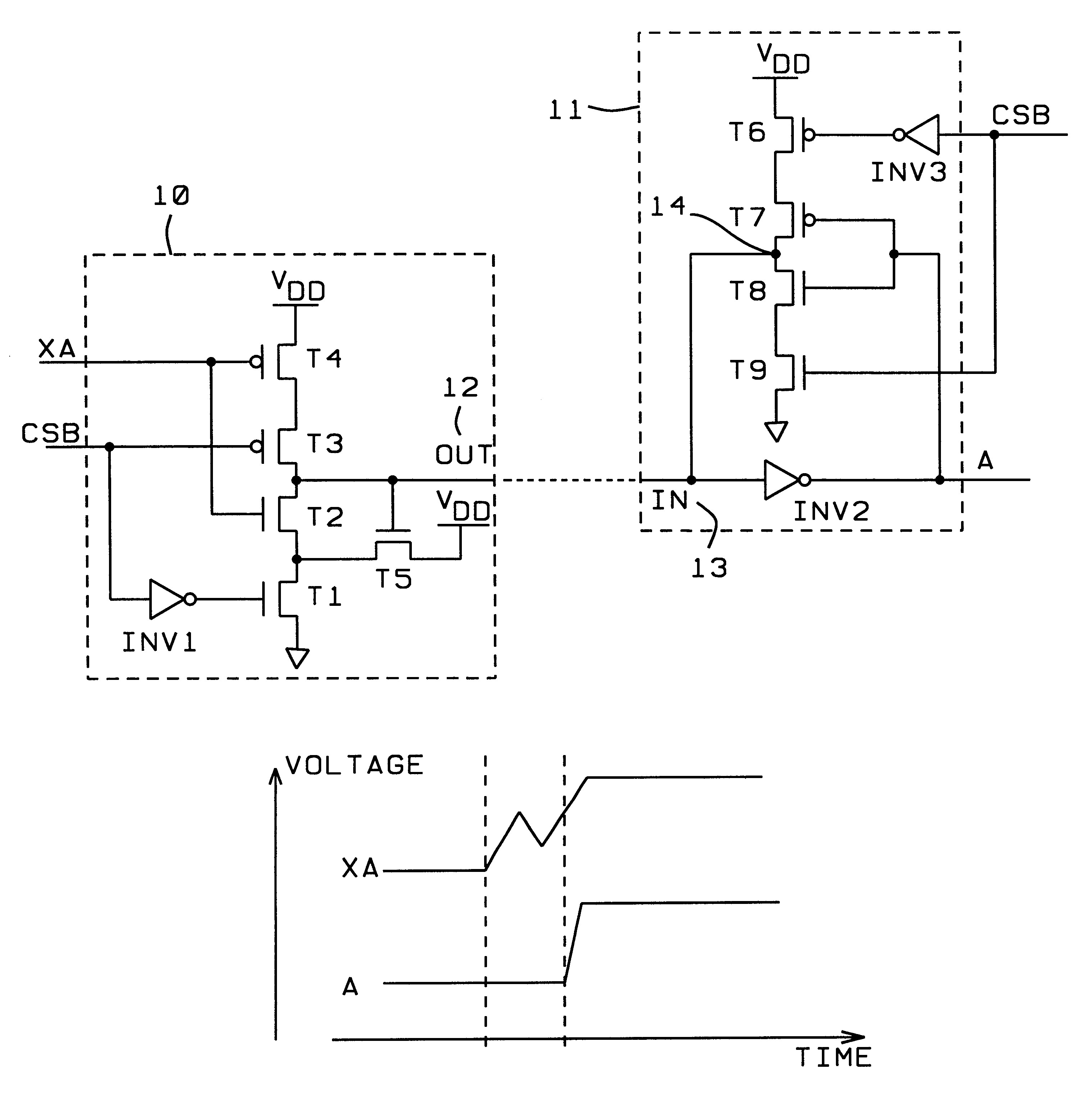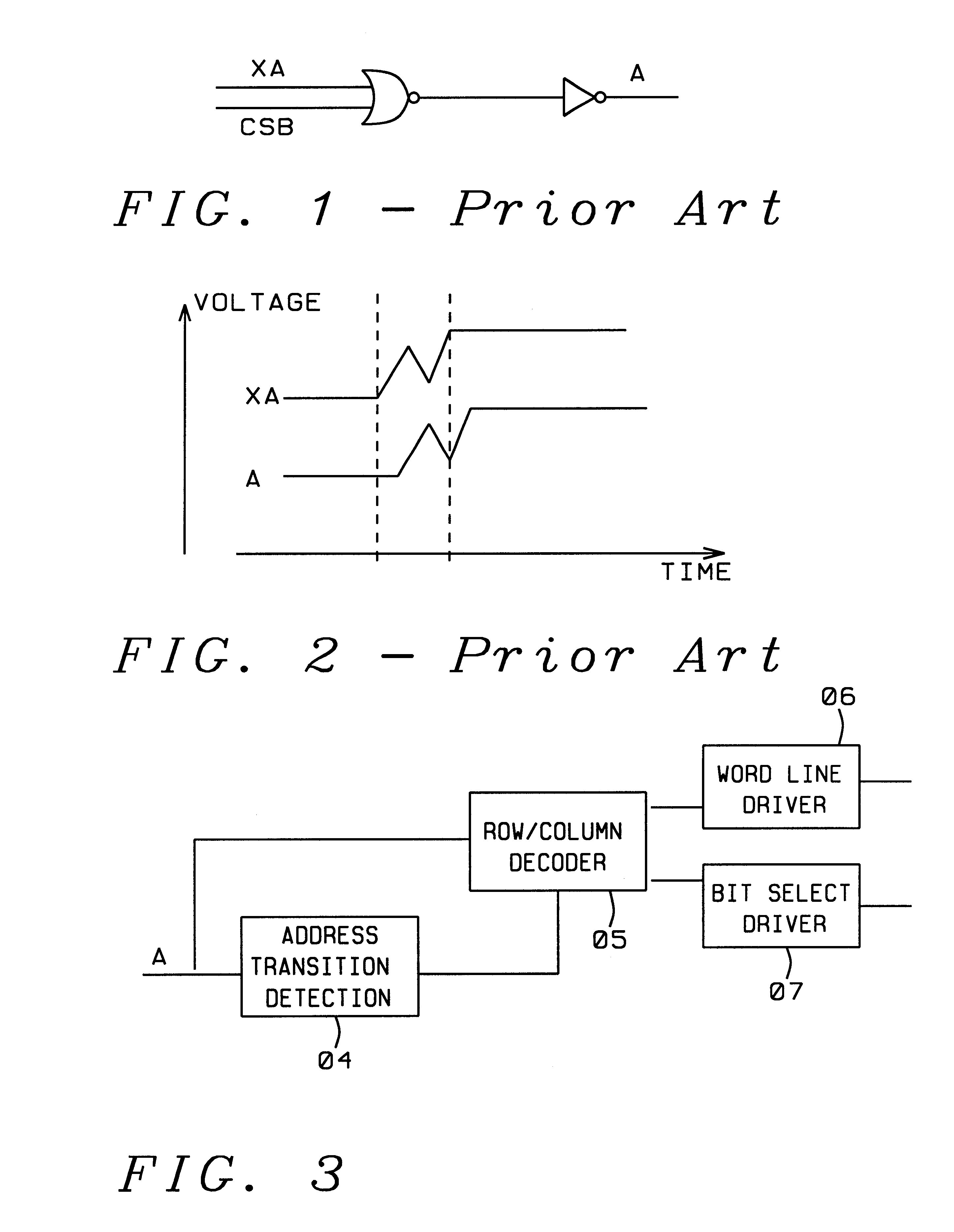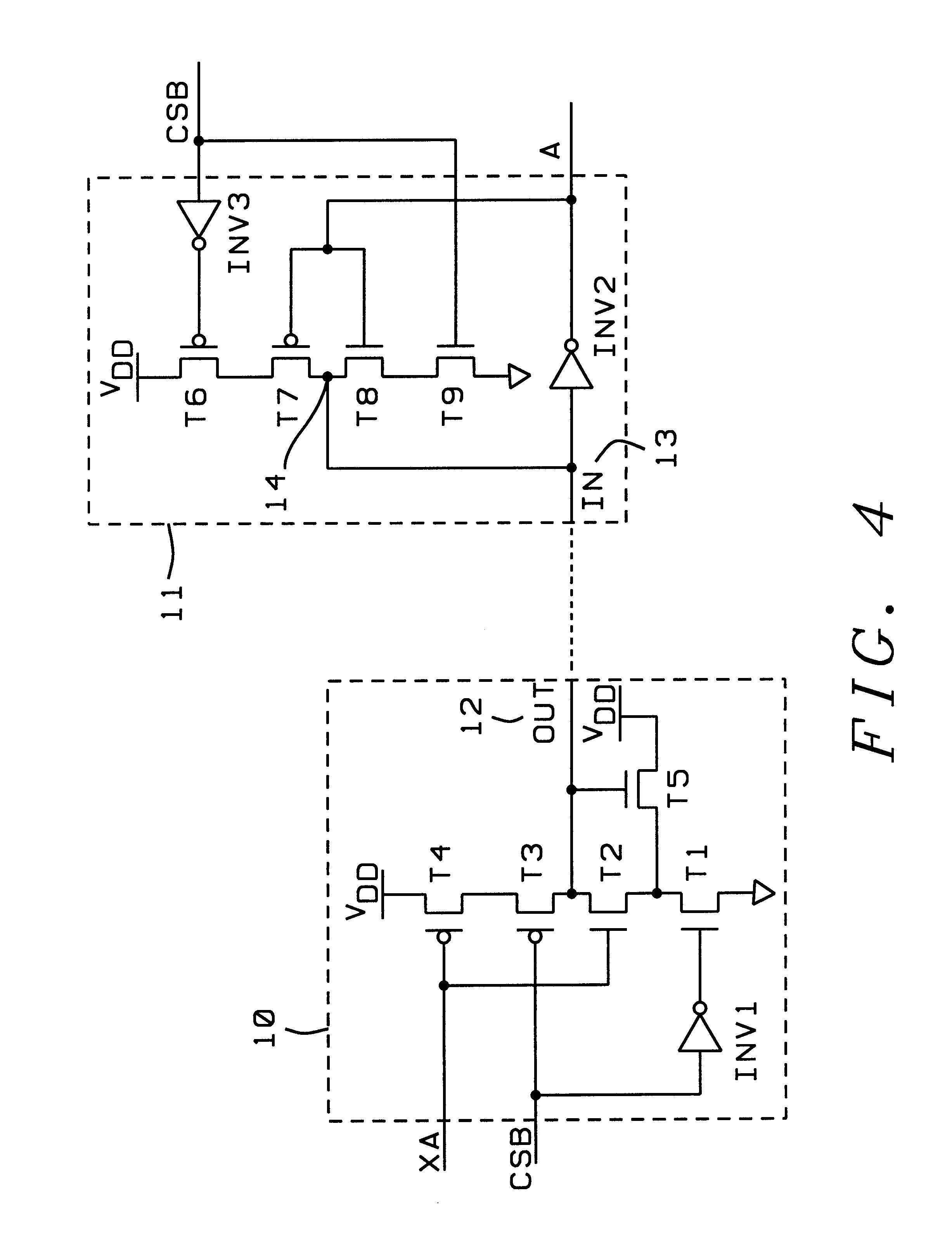Input buffer circuit for low power application
a low-power application and input buffer technology, applied in logic circuit coupling/interface arrangement, pulse technique, instruments, etc., can solve the problems of high power dissipation used in memory applications, possibility of multiple transitions, and high power use than necessary
- Summary
- Abstract
- Description
- Claims
- Application Information
AI Technical Summary
Benefits of technology
Problems solved by technology
Method used
Image
Examples
Embodiment Construction
12 is the inverse of XA when CSB=0, and when CSB=0 and XA=1, then OUT=0.
Continuing to refer to FIGS. 4 and 7, consider the case where CSB=0 and XA=0. The value of CSB is inverted by Inverter INV1, so that a "1" appears at the Gate of nFET T1. The "1" level at the Gate makes nFET T1 active, and current may flow. CSB directly feeds the pFET T3 with a "0" level, making T3 active. Since XA=0, the Gate of nFET T2 is biased to make T2 inactive. However, XA feeds the Gate of the pFET T4 with a 0 level causing T4 to be active. The OUT signal 12 from the Schmitt Trigger is thus determined by nFET T5, which is inactive because the current from V.sub.DD passes through the active T4 and T3. Thus, OUT 12 is at the "1" level. The Gate of T5 will stabilize at "1" confirming that T5 is inactive. Again, for all XA, OUT is the inverse of XA when CSB=0. In this case OUT=1.
Continue to refer to FIGS. 4 and 7, when CSB=1, the OUT line 12 of the Schmitt trigger is placed in a high Z state, and the value o...
PUM
 Login to View More
Login to View More Abstract
Description
Claims
Application Information
 Login to View More
Login to View More - R&D
- Intellectual Property
- Life Sciences
- Materials
- Tech Scout
- Unparalleled Data Quality
- Higher Quality Content
- 60% Fewer Hallucinations
Browse by: Latest US Patents, China's latest patents, Technical Efficacy Thesaurus, Application Domain, Technology Topic, Popular Technical Reports.
© 2025 PatSnap. All rights reserved.Legal|Privacy policy|Modern Slavery Act Transparency Statement|Sitemap|About US| Contact US: help@patsnap.com



